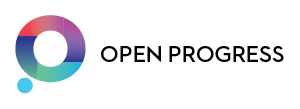Introduction to the Messaging Lab Vaccine work
In February 2021, Open Progress Messaging Lab started our Let’s Protect, Vaccine Texting program. The project was launched in the midst of a chaotic COVID-19 vaccine rollout and was designed to leverage the Open Progress community’s primary strength: our volunteers, to help eligible residents get COVID-19 vaccines.
Since our launch, over 100 Open Progress volunteers concocted outreach to over 1.5 million people in 8 different states, helping directly schedule thousands of people for COVID-19 vaccine appointments. In addition, we’ve also had thousands of conversations encouraging people to talk to their friends, family, and workmates about the importance of getting vaccinated.
In this series, we will dive deep into the project - our findings, and what this pandemic had taught us about outreach.
Part 1: Designing the Outreach
Part 2: GOTVax + Open Progress
Part 3: Taking it national, VaxTogetherAustin & HACA
Part 4: Shifting our messaging, VaxTripling & Empower Project
Part 1. Designing the program and initial outreach
The initial idea for this outreach program came about from the initial flaws in the COVID-19 vaccine rollout. While decisions to prioritize essential workers and vulnerable populations in theory allowed for those most-affected to get vaccinated first, the logistics of coordinating federal procurement, distributions to states, medical providers, and community organizations created a variety of issues of accessibility.
In short, those who were eligible to get the COVID-19 vaccine often didn’t know where, or struggled to secure appointments.
We at Open Progress wanted to theorize some potential ways that we could leverage our strengths, a large and dedicated volunteer base and access to a Peer-to-Peer (P2P) texting software, to help people secure COVID-19 vaccine appointments. We also wanted to ensure that we were helping those who were most left behind by the vaccine rollout: traditionally underserved communities, BIPOC residents, rural areas, and older residents without access to technology.
The outreach idea we worked on was that if we could identify some partners on the ground who were setting up COVID-19 clinics, we could use our networks of volunteers to handle outreach and directly schedule eligible residents for vaccine appointments. The thinking was that since 97% of Americans have a cell phone, we could reach the vast majority of people and schedule people in a way that was convenient for them. We hoped that eliminating the technological barriers to scheduling appointments would ultimately lead to increased vaccination rates and more community protections.
However, we had to prepare for contingencies: how would we approach people who were vaccine hesitant? What about those who could not easily make appointments, be it because of health, transportation, or working constraints? How would we respond to conversations where recipients were already vaccinated, could we activate them further? All of these questions would be present in our minds as we worked with our partners to keep crafting outreach strategies.
We were fortunate to also connect with a group called GOTVax, who were standing up a similar program in Boston, MA. GOTVax was going to set-up the clinics, while Open Progress would handle the P2P texting outreach to eligible residents, all with a focus on helping the most vulnerable and underserved populations.
Be sure to check out Part 2: GOTVax & Open Progress, coming soon!
